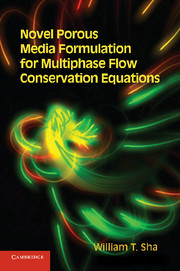Book contents
- Frontmatter
- Contents
- Figures and Table
- Foreword
- Foreword
- Foreword
- Nomenclature
- Preface
- Acknowledgments
- 1 Introduction
- 2 Averaging relations
- 3 Phasic conservation equations and interfacial balance equations
- 4 Local volume-averaged conservation equations and interfacial balance equations
- 5 Time averaging of local volume-averaged conservation equations or time-volume-averaged conservation equations and interfacial balance equations
- 6 Time averaging in relation to local volume averaging and time-volume averaging versus volume-time averaging
- 7 Novel porous media formulation for single phase and single phase with multicomponent applications
- 8 Discussion and concluding remarks
- Appendix A
- Appendix B
- Appendix C
- Appendix D
- References
- Index
5 - Time averaging of local volume-averaged conservation equations or time-volume-averaged conservation equations and interfacial balance equations
Published online by Cambridge University Press: 07 October 2011
- Frontmatter
- Contents
- Figures and Table
- Foreword
- Foreword
- Foreword
- Nomenclature
- Preface
- Acknowledgments
- 1 Introduction
- 2 Averaging relations
- 3 Phasic conservation equations and interfacial balance equations
- 4 Local volume-averaged conservation equations and interfacial balance equations
- 5 Time averaging of local volume-averaged conservation equations or time-volume-averaged conservation equations and interfacial balance equations
- 6 Time averaging in relation to local volume averaging and time-volume averaging versus volume-time averaging
- 7 Novel porous media formulation for single phase and single phase with multicomponent applications
- 8 Discussion and concluding remarks
- Appendix A
- Appendix B
- Appendix C
- Appendix D
- References
- Index
Summary
The local volume-averaged multiphase conservation equations given in Chapter 4 are differential-integral equations. Before they can be used for either further analysis or numerical computation, it is necessary to (1) to express the volume averages of the product of the dependent variables in terms of the product of their volume averages and (2) to evaluate the interfacial transfer integrals that depend on the local values of the dependent variables at every point on the interface. To this end, we postulated that a point-dependent variable ψk for phase k can be expressed as the sum of its local intrinsic volume average 3i〈ψk〉, and a spatial deviation ψ̃k. ψk can be a scalar, vector, or tensor.
Basic postulates
It is postulated that both 3i〈ψk〉 and ψ̃k have a low-frequency component to be denoted by the subscript LF and a high-frequency component to be denoted by a prime. Thus, where The superscript c is a reminder that cψ′k is a composite of two high-frequency fluctuations. The low-frequency component refers to one that is a slowly varying function of time, including the time-dependent limiting case. The high-frequency component varies rapidly with time.
- Type
- Chapter
- Information
- Publisher: Cambridge University PressPrint publication year: 2011

